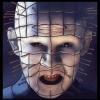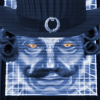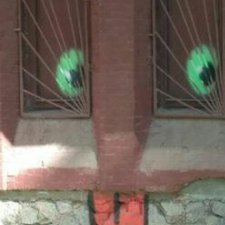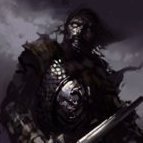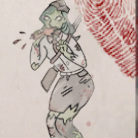Search the Community
Searched results for '/tags/forums/memory/' or tags 'forums/memory/q=/tags/forums/memory/&'.
-
for the original 3070 id agree it was the ammount though the increased bandwidth in the ti models should help in 4k hell even the old AMD fury-x could at the time run 4k with only 4gb due to the hbm memory being that much faster to swap but yeah theres more than one way to skin a rhinocereus . a 3070 with 2 gb gddr6x 16 gb would have been pretty interresting to say the least .
-

2.10 Crashes - May be bow \ frontend acceleration related
stgatilov replied to wesp5's topic in TDM Tech Support
As far as I know, it contains complete virtual memory contents of TheDarkMod process at the moment of crash: https://learn.microsoft.com/en-us/windows/win32/wer/collecting-user-mode-dumps Maybe it has some stuff in the header (like OS build, CPU info), but I can't say anything for certain. It should not contain any data from other programs of OS, as far as I know. Note that kernel-level dumps are a very different thing: https://learn.microsoft.com/en-us/troubleshoot/windows-client/performance/generate-a-kernel-or-complete-crash-dump They indeed contains memory contents of OS and probably other programs, so don't send them to anyone untrusted (or just don't send them). -
A big thank you and congratulations for this mission I would rate 10/10. I can't find a better one in my memory. It's so big and varied, full of new assets. Just... wow ! Finding a way through the was hard for me, as well as being able to jump and go through a narrow hole in the I also gut stuck in this area just below the horizontal mesh hatch that opens with Oh, and my game use to crash when firing a fire arrow at a Thanks again, you are so good at this.
-
Christmas coming early this year http://forums.thedarkmod.com/topic/18999-im-working-on-a-vr-version-early-alpha/
-
Google translated: https://rutracker-org.translate.goog/forum/viewtopic.php?t=6419292&_x_tr_sl=ru&_x_tr_tl=en&_x_tr_hl=nl&_x_tr_pto=wapp === There are lots of topics about black screens during the main menu. https://forums.thedarkmod.com/index.php?/search/&q=Black screen&type=forums_topic&nodes=58&search_and_or=and
- 20 replies
-
- tdm
- black screen
-
(and 1 more)
Tagged with:
-
Reported it on the bug tracker, really hope it can be taken a look at. This one feels a little frustrating because it's something both very basic and very effective in improving performance (given how costly lights are), plus I was convinced it worked on lights too till noticing it won't. I'm actually keeping those parameters for small lights on my map in advance, in case the limitation can get fixed soon. https://bugs.thedarkmod.com/view.php?id=5668 While on technical questions I wanted to ask something else, specifically to other Linux users here: After I reboot my system I'm using about 3.0 GB of RAM. The moment I open a large map in DarkRadiant, usage jumps to nearly 7.0 GB... this is most likely normal. The weird thing is that once I close it, I'm barely down below 6.0 GB. Why does DR permanently fill the memory so much, even after its process gets closed? The system monitor shows DR only using 1.5 GB of memory, meaning the rest might be the inode cache of the files it loaded. I know this likely has to do with large textures of all things... TDM by comparison seems to free its memory better after I quit, so I wonder if something is up still. This can become an annoyance: I have 16 GB of RAM... when running both DarkRadiant and TheDarkMod to test my map, my system's memory usage ends up jumping to 12 GB eventually which starts alerting the kernel that I'm getting close to RAM limit. I don't have a SWAP partition any more, and currently not enough money to buy another set of memory modules and bring my system to 32 GB. Thus this seemed worth asking about if the memory use can be mitigated.
-
On the wiki, I'm working on a set of pages with the title-preface and broad theme "The Parts and Whole". This looks at the hows and whys of map objects being formed into collections. The hub of this is The Parts and Whole: Overview Within the hub, so far, the section "Techniques that Affect DR Only" is built out with comparison tables and child pages. This covers these techniques: Hide/Show, Region, Layer, Filter, Group, Selection Set. I'd appreciate any eyeballs on the work so far. Please suggest or edit-in improvements. In particular, are there links to videos or other wiki or forum pages that you think most apt and should be added, e.g., to the "See Also" section? "The Parts and Whole" effort is mostly intended for newbies and so is not afraid to state the obvious at times. In some cases, it covers ground also handled by the necessarily-concise DarkRadiant User Guide, but with more depth and context. In other cases, the info was only found buried in forums. Because I'm trying to cover a fair amount of ground, the pages are text-only. Some of the child pages could benefit from screenshots some day.
-
Yeah it would be cool to see some more detailed statistics and it’s a shame they aren’t really captured. Since we are talking about fan mission platforms, where players also make the content for the game, I feel like the best thing we’ve got is you can look at the number of content releases for the games. Keep in mind the graph counts campaigns as single missions - so for example NHAT and TBP both count as 1 mission. A good year for TDM has has approaching maybe 50% - mostly we’re 25-30%. https://www.ttlg.com/forums/showthread.php?t=152494 You could also look at the number of ratings thief missions get on https://www.thiefguild.com/ vs TDM ones, but that is pretty iffy in that you could chalk that up to more awareness of the site in the thief community than TDM Out of curiosity is there a reason a thief player can’t be a new player? I kind of think a player is a player and new players would be ones who are playing the dark mod who weren't? Is there disagreement the base of players most likely to pick up the game are fans of the thief games? They are certainly the most fruitful place to find feedback on the game beyond the sphere of this forum that I have seen. When we were trying to finish up SLL there was a lot of discussion on the forums about how long it had been since there was a release for the game. I am thankful that the stats show at least some stability over the years in terms of releases for TDM, but the trend for all of the games is decline. Not doing anything is a valid response if that’s what the devs want to do - it is not possible to provide evidence that any effort will slow that inertia. As a player and content maker I would just prefer trying to find feedback where it is offered from players who were willing to try the game but ultimately could not engage with it and see if there is anything that can be done within reason to ease them into the game. The game has a lot to offer imo. All those players are potential contributors - contributions in turn attract players - it’d be nice to see the cycle go on as long as it can.
-
Guess there is more gaming-fight left in these old PCIe3.0 motherboards than initially expected. In theory, as long as you have enough video memory, the impact on performance should be very minimal. But as soon as it gets exhausted though, look out, frame rates will probably tank, as it has to push and pull textures from system memory. This is (another) reason why having graphics cards with lots of memory is important. E.g. the Rx6500XT with 4GB and only 4 lanes at PCIe 3.0, is like going into a boxing match with a broken arm and a broken leg. I feel kind of stupid now for replacing a PCIe 3.0 motherboard with a PCIe 4.0 motherboard. But I wanted to make sure I can get as much life out of a 5950x system as possible. And the new platform from AMD is so attractively priced, that they have had to slash the cost less than three months after launching it. In other words, nobody wants to pay exorbitantly for motherboards during a recession!
-
WannaCry Ransomware: Latest windows patch/s - http://forums.thedarkmod.com/topic/18861-wannacry-ransomware-latest-windows-patchs/
-

Fan Mission: Sir Talbot's Collateral by Baal & Bikerdude (15/04/2015)
Jackal replied to Bikerdude's topic in Fan Missions
It very well could be from another TDM mission, but it felt very reminiscent of Thief 3. It felt like a core memory when I heard it. -
Hey all! I haven't properly played the Dark Mod since 2.05 or maybe even 2.04 until now and I've noticed that whatever I do in game the center and LFE channels of my 5.1 sound system remain silent. In other words, the output is actually 4.0 (2 front + 2 rear speakers) rather than 5.1. Now, I am not sure exactly but I recall no problems previously - until the EFX update 2.06, I think. I even found my older post about extremely loud LFE channel here: http://forums.thedarkmod.com/index.php?/topic/18741-really-loud-music/&tab=comments#comment-405277 As I understand, it is often made that the center and LFE channels are reserved for special sounds and not used often as the front speakers. For example, in Witcher3 center is mostly used for voices in the dialogs and the best way to check LFE is to use the aard sign magic. Or, in Skyrim it is known that LFE plays only when the dragon hits the ground. The first question is: do I have an issue with sound or not? Because maybe the sound output is ok and I've simply met no specific conditions utilizing the center and LFE channels? Minding my previous paragraph, I don't think it's EFX related but maybe the sound shaders simply changed since 2.05? This all brings me to another question: is there a way to check somehow in the Dark Mod wether the game outputs the sound correctly? About my setup now. I output sound via HDMI to Pioneer receiver with 5.1 setup. Everything works fine in modern games that provide 5.1 output support like the Witcher3 or Mortal Kombat 10 and 11. The windows sound configuration in control panel allows me to check all the speakers and it's fine. I have win 7 64 bit, OpenAl installed. The Dark Mod allows me to set 5.1 sound in options with no warning (I know that in other cases it gives a message like "your system does not support this sound configuration"). Please, help me to find out if anything's wrong with my setup and why my center and LFE channels are silent. Hate to start new threads but I didn't find anything related to my problem. Moreover, I feel the lack of sound-related discussions considering our community's interests.
-
I wanted to internationalise The Hare in the Snare before I released it but I couldn't get the scripts to work and had some other questions as well. I posted about it Newbie Dark Radiant Questions and nobody replied, so I gave up. It being my first FM I didn't feel confident digging into it and just wanted to release the FM. I just got the impression that it wasn't a big deal and nobody cared about it. From memory, the script worked once but I needed to re-run it and just couldn't get it to work. It's also Perl which nobody really uses anymore. I think I recommended to a 'I want to help' person to convert it to Python, but that didn't go anywhere. I don't think you need the script though if you internationalise from the very beginning (i.e. create your own dictionaries). At the end of the day it's extra work for the mapper and if it adds too much overhead (i.e. is broken or is a PITA) then nobody is going to use it. https://wiki.thedarkmod.com/index.php?title=Internationalization
-
I also feel you. I used to be a regular here in the forums, but since my son was born in 2022, it basically grunded to halt, although I still get the mails on threads that I wrote in. Ironically, your post in June about not having time got me back here and got me motivated to try and use some of my precious spare time to get some progress on the map I started years ago. I still have not been able to finish a map and want to change that, as long long as the community here is still active
-
It should be around $400-600, a price bracket that was once not considered mid-range, delivering raster performance similar to the 7900 XT but likely with better raytracing performance. We can only assume RDNA4 tops out at 16 GB, but 32 GB would be a funny option if they go for it. I think you can create scenarios where games could use as much or more than 24 GB in 4K, but it's obviously rare and largely unneeded. It would be a good amount of VRAM for AI stuff, though the sky's the limit there and 32 GB isn't going to be enough for some LLMs. HBM memory is expensive to make and in huge demand for AI accelerators, enterprise GPUs, and other enterprise products (such as Intel Sapphire Rapids CPUs aka Xeon Max with HBM). I think it's as much as 5x more expensive per gigabyte than GDDR6X/7. So while it would be great for consumer gaming GPUs, with major bandwidth and efficiency benefits, AMD and Nvidia are going to put it in $10,000 to $40,000 products instead. Years ago there was talk of making cheaper, less capable versions of HBM for the mass market, but it never materialized: https://www.tweaktown.com/news/53536/low-cost-hbm-way-hit-mass-market-soon/index.html If the AI bubble pops, we might see some efforts to pivot back to consumer products. Aside from GPUs, probably every CPU should eventually be packing a big L4 cache utilizing HBM, DRAM, or bespoke 3D layers by the late 2030s.
-
Well, the 7600 XT is considered sus for putting 16 GB on 128-bit, but it clearly works in some scenarios. Also IIRC GDDR7 will have about +30% bandwidth over GDDR6X right out of the gate, rising to about +100% as the generation progresses. Big caches (Infinity Cache L3 for AMD, lots of L2 for Nvidia) have made smaller bus widths more viable, and I think they have improved compression techniques and other factors over time to help alleviate bandwidth demands. There's already a little bit of analysis of what we can expect to see in RDNA3+ and RDNA4, very technical though: https://chipsandcheese.com/2024/02/04/amd-rdna-3-5s-llvm-changes/ I am eager to see if AMD is bold enough to do (or allow AIBs to put) 32 GB on the top RDNA4 card, which has long been rumored to be slower than the 7900 XTX in raster, but will hopefully beat it in raytracing and other areas such as AI/ML perf. And I think that card will have a 256-bit bus and 16 GB memory normally.
-

Should we consider using detail textures?
MirceaKitsune replied to MirceaKitsune's topic in The Dark Mod
@The Black Arrow That's a good analysis. I don't disagree but we're referring to different time periods with different quality aims: In the early days of 3D and low-res CRT screens when we had 256x256 textures, detail textures were used to make surfaces appear as if they have 1024x1024 textures... today in the age of 1080p monitors such texture can appear blurry from up close, we want to make 1024x1024 textures appear of 4096x4096 quality. Back then the goal was to get at least a little bit of perceived sharpness, today the goal is to see those microscopic details on every surface as if everything is real... while the concept of detail textures is old it scales to cover both aims. As you correctly pointed out, the ideal solution would be upgrading the actual textures themselves. Sadly there are two big problems with this that will likely never be possible to overcome: Someone must create or find identical textures to replace existing ones, which have to retroactively fit every old FM. That would be a huge effort for so many images, and will not look exactly the same way so people would complain how "this wall used to be made of small red bricks which are now larger and yellower which isn't what I intended and no longer line up". An advanced upscaling filter may be able to bump the resolution with good results, this would be a lot less effort and retain the exact appearance of textures. The even greater issue is storage and memory use would go through the roof. Imagine all our textures (from surfaces to entity skins) being 4096x4096 which would be the aim for decent quality today: TDM could take over 100 GB of drive space, you'd need at least 16 GB of RAM to run it, and the loading time of a FM will be 5 minutes. Detail textures are a magic solution for both problems: They're overlayed in realtime on top of the standard textures without changing their base appearance. This means you see pixels several times the scale of the image without requiring any image to actually be at that resolution, no vRAM or loading time increase. And if detail layers are disabled with distance you also don't lose FPS in per-pixels calculations when distant lights update. -
We have just smashed through the 10k likes barrier - http://forums.thedarkmod.com/topic/18623-we-have-been-submitted-to-steam-greenlight/?p=403110
-
-

I've found it difficult to find where TDM is listed as #1 on Greenlight. This page ( https://steamcommunity.com/greenlight/ ) has no ranked listing. This one ( https://steamcommunity.com/sharedfiles/filedetails/?id=858048394 ) has no visible rank or stats page. Is it my script blocker?
-
-
Of course, it is one of the reasons for the decline of online forums, since the advent of mobile phones. Forums on a mobile are a pain in the ass, but on the other hand, for certain things there are no real alternatives to forums, social networks cannot be with their sequential threads, where it is almost impossible to retrieve answers to a question that is asked. has done days ago. For devs for internal communication, the only thing offered is a collaborative app, such as System D (not to be confused with systemd). FOSS, free and anonymous registration, access further members only by invitation, full encrypted and private. https://www.system-d.org
-
The devs didn't title this thread, and @datiswous said they're attempting to mislead people by using Russell's name and a retro style to make it resemble Thief, which is cynical. I grew up on forums like I'm sure anyone who likes a game from '98 did. I actually left the Discord immediately after joining it because it was more off-topic doom-posting than anything relevant to the mod. I thought the forums might be better, but it's mostly just grown men yelling at clouds and telling strangers how mature they are, and a few brave souls actually developing anything. Depressing place, I'll just stick to enjoying new missions every 6 months without an account.
-
True, but, 1. this thread is called "Western stealth FPS with Stephen Russell", and, 2. nothing you said changes anything for me. The gameplay still doesn't look like something I'd enjoy. And, if you really think this forum is cynical, then you don't visit forums much. Actually, the majority of the users are are pretty mature, unlike in other forums.
-
Why does a text editor choke and tell me there is not enough memory to open a 2 meg txt file, on a machine with 1 GB of RAM? I would expect this behavior from a machine in 1993, but today? really?
- Show previous comments 2 more
-

-

-

Don't use notepad, it has lots of trouble with any files over 1MB or so. User notepad++
-
So giving it none of those tags, but making the AI invisible, silent, non-solid, and on a team neutral to everyone would not work? Oh well, it was a horrible inelegant idea anyway.
